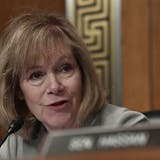In October, 1970, William Eagleton, head of U.S. Operations in Algeria, sent a secret cable to Secretary of State William Rogers. Timothy Leary, the High Priest of LSD, who had broken out of jail in California with the assistance of the Weather Underground, had arrived in Algiers, Eagleton reported. Black Panther Eldridge Cleaver had a hand in arranging Leary's exile.
Leary eluded capture for more than two years. In "The Most Dangerous Man in America," Bill Minutaglio and Steven Davis, the co-authors of "Dallas 1963," tell the story of Leary's odyssey — and the manhunt organized by President Richard Nixon to destroy a union of "dope and dynamite."
Making effective use of recently discovered primary sources, dozens of interviews and Leary's personal papers, the authors follow the former Harvard professor from prison (where he was serving a 10-year sentence for possession of two marijuana cigarettes) to Algeria, Switzerland and Afghanistan. Fast-paced and suspenseful, their book captures a mad — and menacing — moment in American history.
Clearly, Minutaglio and Davis have done their homework. In my judgment, however, they compromise their credibility by presenting in italics (and sometimes surrounded by quotation marks) "interior thoughts and monologues derived from memoirs and primary sources." At times, moreover, non-italicized observations contain what also appear to be interior thoughts. The authors assert, for example, that getting Switzerland to extradite Leary will be for Nixon "like putting Al Capone behind bars."
That said, "The Most Dangerous Man in America" is awash in authenticated details, by turns outlandish and outrageous, that illuminate 1970s American culture and politics. After downing some LSD, Dock Ellis, a pitcher for the Pittsburgh Pirates, we learn, woke up, wondered "what happened to yesterday," went to the ballpark, "couldn't tell if he was facing Babe Ruth or Mickey Mouse," and hurled a no-hitter. The FBI's bag of dirty tricks, the authors reveal, included fake news that brought tensions between Cleaver and Huey Newton to a boil. And, in an exchange in the Oval Office with TV personality Art Linkletter, whose daughter killed herself after ingesting LSD, Nixon opined that the Swedes, Finns, Brits and Irish were "strong races" even though they drank too much, while drug societies came apart. "At least with liquor," the president concluded, "I don't lose motivation."
Leary returned to an America less inclined to create a counterculture than to engage in a culture war. Always willing to "adapt," Leary blasted John Lennon, Bob Dylan and the Weathermen ("a bewildered, fugitive band of terrorists"). Following his release from custody, the authors indicate, Leary became a celebrity lecturer, teaming up with G. Gordon Liddy for debates on college campuses. On his deathbed in 1996, he clenched his fist, asked "Why?" and then "Why not?"
Glenn C. Altschuler is the Thomas and Dorothy Litwin Professor of American Studies at Cornell University.
The Most Dangerous Man in America
By: Bill Minutaglio and Steven L. Davis.
Publisher: Twelve, 384 pages, $30


